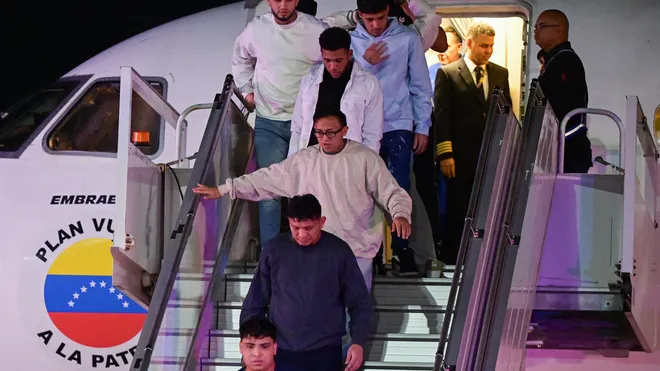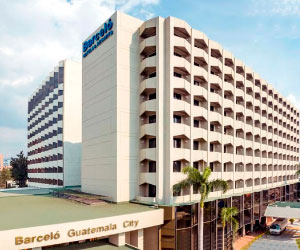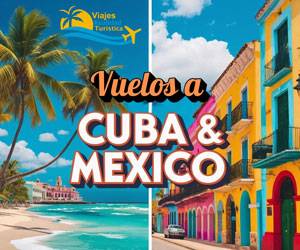El Salvador has swiftly emerged as one of Central America’s most promising tourism destinations, driven by a dramatic drop in crime and a nationwide push to enhance safety and infrastructure. Reflecting this transformation, the US Embassy has eased its travel restrictions across the country, signaling renewed confidence in El Salvador’s security landscape. With a surge in international visitors, record-breaking tourism growth, and strategic developments like new airports and surf cities, the nation is solidifying its place as a remarkable and rising tourism star in the region.
El Salvador, formerly known for its high crime rates, has experienced a striking turnaround that is now capturing international attention within the travel and tourism industry. The Central American country is not only gaining recognition for its drastically improved security but is also experiencing an unprecedented surge in international tourism. Following the recent decision by the US embassy to lift all internal travel restrictions for its staff, and amid rapid expansion of tourism infrastructure, El Salvador is rapidly establishing itself as one of Central America’s most dynamic and ascending travel hotspots.
From Notorious to Noteworthy
Just over five years ago, El Salvador was widely associated with high crime rates and instability. Today, however, the narrative has shifted sharply. Following a series of aggressive security reforms and a national crackdown on organized crime, the country has witnessed a dramatic drop in its homicide rate. According to multiple travel and industry sources, El Salvador’s crime rate is now at its lowest in many years, an achievement that is reshaping the international perception of the country.
While debate continues about the scope and methods of the reforms, one fact remains indisputable: El Salvador has become significantly safer. This safety renaissance is reshaping both domestic confidence and international travel patterns. A key signal of this turnaround came when the United States embassy lifted its long-standing travel restrictions, announcing to its staff of nearly 900 that they are now free to travel anywhere within El Salvador. This move speaks volumes about how far the country has come and has served as an important endorsement for prospective international tourists.
Ongoing Travel Advisories: A Cautious Note
Despite the lifted restrictions by the US embassy, Global Affairs Canada continues to advise its citizens to exercise a high degree of caution while traveling to El Salvador. This yellow alert remains in place on official channels, prompting questions about whether further improvements in perception are necessary among global institutions. Still, the Canadian advisory does not prohibit travel, and increasing numbers of Canadians are making the journey, signaling growing confidence in the country’s safety.
Security Presence and Tourism Commitment
An observable military presence remains across the country, serving as a reassurance for residents and visitors alike. Though more discreet in rural areas, uniformed forces remain visible in urban centers such as the capital, acting as a deterrent to potential resurgence of criminal activity. For international tourists, this presence is not seen as intrusive but as a marker of continued vigilance by the state.
The tourism industry, meanwhile, has benefited from this climate of security. Stakeholders across aviation, hospitality, and local commerce have begun to invest more confidently in the country’s potential as a high-growth travel market. The government has demonstrated a strong commitment to tourism, recognizing the industry as a core pillar of national economic development. In this context, maintaining a secure environment is more than a policy choice—it is a strategic imperative.
Lesser Concerns: Seismic Activity and Stray Animals
In contrast to past concerns about violent crime, the more frequent issues now cited by locals and tourists are minor in nature. El Salvador, located along the geologically active Pacific Ring of Fire, undergoes approximately 6,000 seismic events each year. While most are imperceptible, the seismic nature of the region remains a background consideration for travelers.
In urban and rural environments alike, the presence of stray dogs has also been noted. These animals tend to be non-aggressive and are viewed by locals as more of a nuisance than a threat. For most visitors, they are merely a part of the local scenery, posing no real danger.
Surf Culture and Coastal Development
A major catalyst behind El Salvador’s tourism revival is the country’s thriving surf scene, which continues to draw international attention to its Pacific coastline. The Pacific coastline, particularly the area of La Libertad, is known for its consistent waves and warm climate, attracting surfers from around the world. The flagship Surf City project, developed to showcase and support beach tourism, has already seen considerable success with its first installment.
Following the momentum of the original Surf City, construction is set to begin on a second installment: Surf City II. This new tourism hub will further promote the country’s positioning as a premier destination for water sports and coastal leisure. The infrastructure surrounding these developments—including modern hotels, local restaurants, and beachfront entertainment—signals a clear move toward meeting global travel standards.
Strategic Aviation Investments
To accommodate the growing influx of visitors and the demands of an expanding tourism economy, El Salvador has announced plans to construct a second international airport. The country is already served by 14 international airlines, among them key players in the Americas and global aviation sectors.
These carriers provide essential connectivity, linking El Salvador to major travel markets across North, Central, and South America. With more direct flights, increasing competition, and enhanced airport infrastructure, the country’s accessibility is set to improve significantly in the years ahead.
Record-Breaking Tourism Growth
El Salvador’s appeal is not only theoretical—it is supported by impressive data. The country welcomed 3.4 million international visitors in 2023, marking a 33% increase over the previous year. This growth rate stands among the highest globally and is particularly noteworthy given the broader post-pandemic context in which many nations are still recovering travel momentum.
From January to October 2024 alone, the country registered a 19% year-over-year increase in visitor arrivals. Within the first 10 months of the year, El Salvador had already reached 80% of its annual tourism target of 3.8 million visitors. If current trends continue, the country is likely to exceed its goals, further solidifying its status as a tourism success story in Central America.
The Ministry of Tourism attributes much of this success to coordinated national efforts to stabilize and promote the industry. Campaigns targeting international markets, improvements in security, and upgraded tourist infrastructure have all contributed to a resurgence in travel demand.
Market Segments and Visitor Demographics
The United States remains the largest source market for El Salvador’s international visitors, with over 1 million Americans traveling to the country in the most recent reported period. This figure underscores the deepening relationship between the two nations in terms of travel and cultural exchange.
Neighboring countries also represent significant segments of the tourism base. Guatemala accounted for approximately 643,000 international arrivals, while Honduras followed closely with around 410,000 travelers crossing into El Salvador. From farther afield, Canada accounted for 48,000 visitors, reflecting increased confidence among North American travelers.
The demographic spread of travelers includes not just surfers and leisure tourists, but also eco-tourists, cultural explorers, and diaspora visitors returning to reconnect with heritage and family. The diverse appeal of El Salvador makes it well-positioned to capture a broad cross-section of the global travel audience.
Economic Impact and Regional Competitiveness
The tourism surge is not just a matter of numbers—it is having real economic implications. Increased visitor spending supports local businesses, creates jobs, and fuels investment in service industries. From hotel development to restaurant openings and tour operations, the ripple effect of tourism is accelerating economic activity across sectors.
With neighboring nations like Guatemala, Nicaragua, and Costa Rica also competing for tourism dollars, El Salvador’s rise introduces a new dynamic in the regional travel economy. The country’s focus on safety, infrastructure, and experience-driven tourism is enabling it to gain ground quickly, challenging older assumptions about its viability as a travel destination.
Long-Term Vision and Infrastructure Pipeline
Looking forward, El Salvador’s tourism strategy includes not only new cities and airports, but a holistic plan for nationwide development. Investments are being made in cultural heritage sites, national parks, and transportation corridors. The aim is to make travel seamless and attractive not just on the coast but inland, where archeological sites, volcanic landscapes, and historic towns offer additional reasons to visit.
Stakeholders across the public and private sectors are aligning their efforts to ensure that the momentum continues sustainably. The inclusion of digital platforms for booking, multilingual support in tourism offices, and promotion through international trade shows are part of the broader strategy to enhance visitor experience and visibility.
Sustainability and Reputation Management
El Salvador’s transformation into a regional tourism leader is not without its challenges. To sustain its rise, the country must manage environmental sustainability, avoid overdevelopment, and ensure equitable distribution of tourism benefits. Reputation management remains crucial, especially as the world continues to monitor its human rights and security situation.
However, by fostering transparency, embracing green initiatives, and continuing to improve global relations, El Salvador can further cement its image as a safe, welcoming, and dynamic destination.
El Salvador’s enhanced security landscape has prompted the US Embassy to lift previous travel limitations, marking a turning point in international confidence. Coupled with unprecedented growth in tourist arrivals and large-scale development initiatives, the country is rapidly ascending as one of Central America’s most dynamic and promising travel destinations.
El Salvador’s remarkable transformation from a nation marred by violence to one celebrated for safety and growth is nothing short of extraordinary. With the US embassy’s easing of travel restrictions, rapidly rising visitor numbers, expanding aviation capacity, and a strong national commitment to tourism, El Salvador is emerging as Central America’s newest star.
From its surf-friendly coastlines to its burgeoning hospitality sector, the country now presents a compelling case for travelers seeking both adventure and security. As tourism continues to flourish, El Salvador is poised not just to meet expectations—but to redefine them. (https://www.travelandtourworld.com/news/article/us-embassy-eases-travel-rules-as-el-salvador-becomes-central-americas-remarkable-rising-tourism-star/)



































